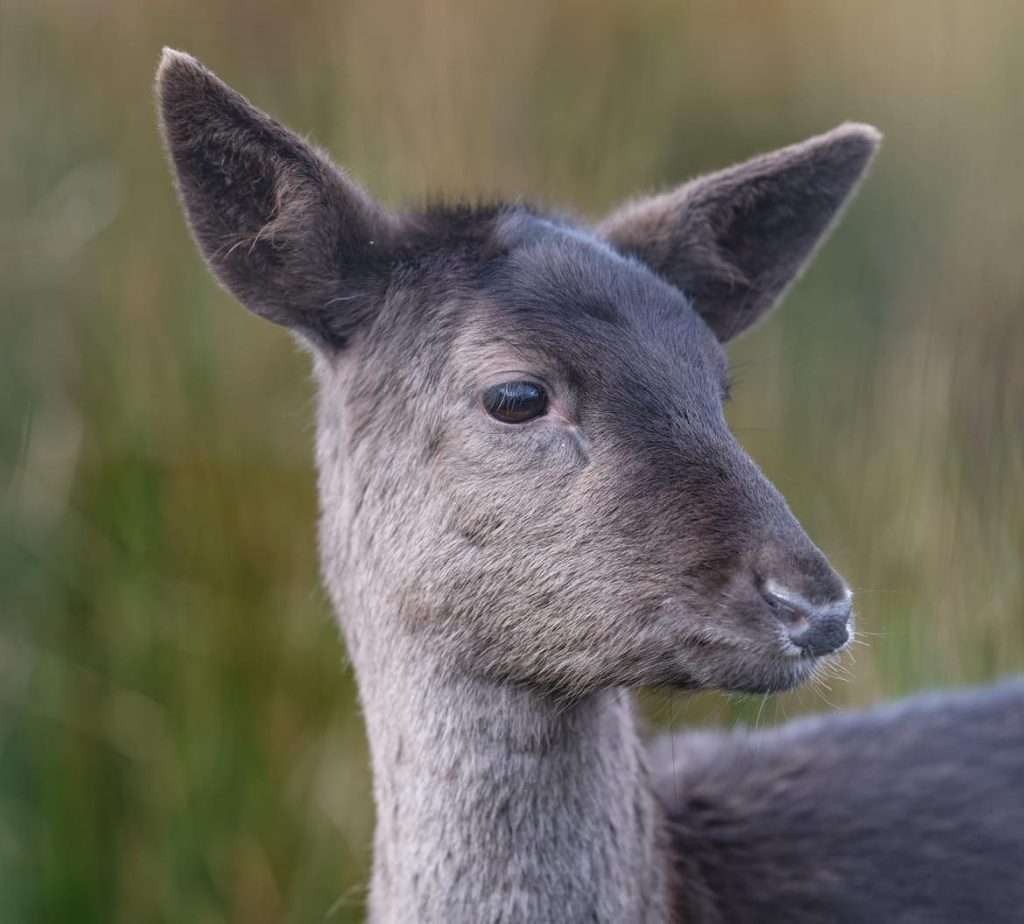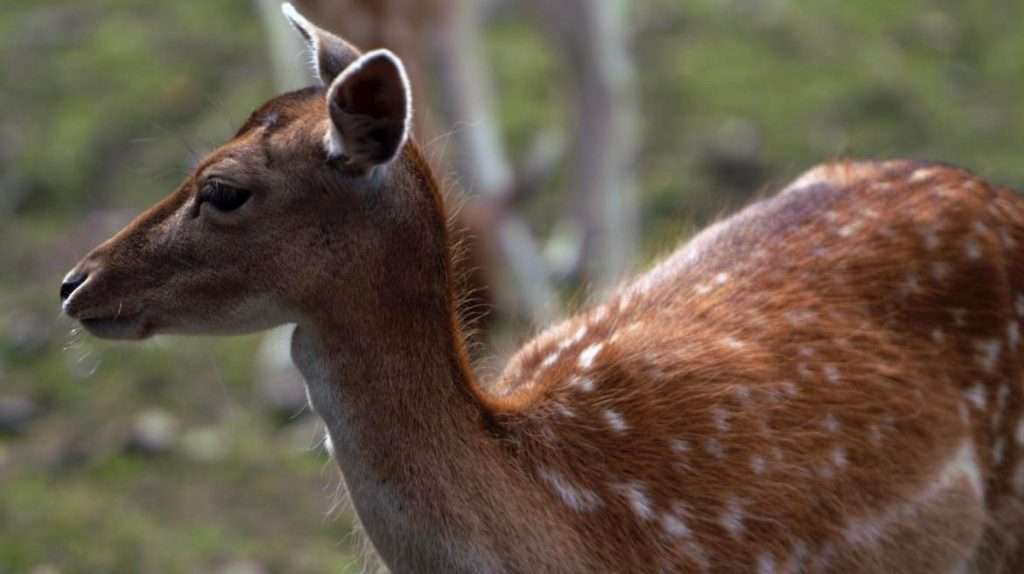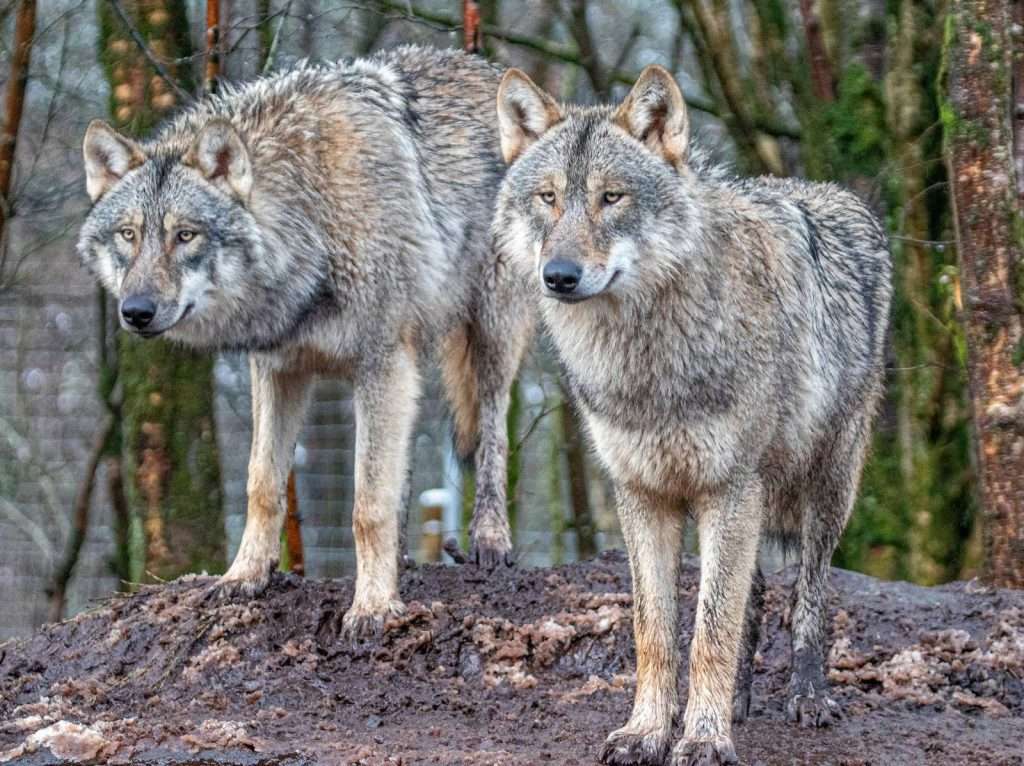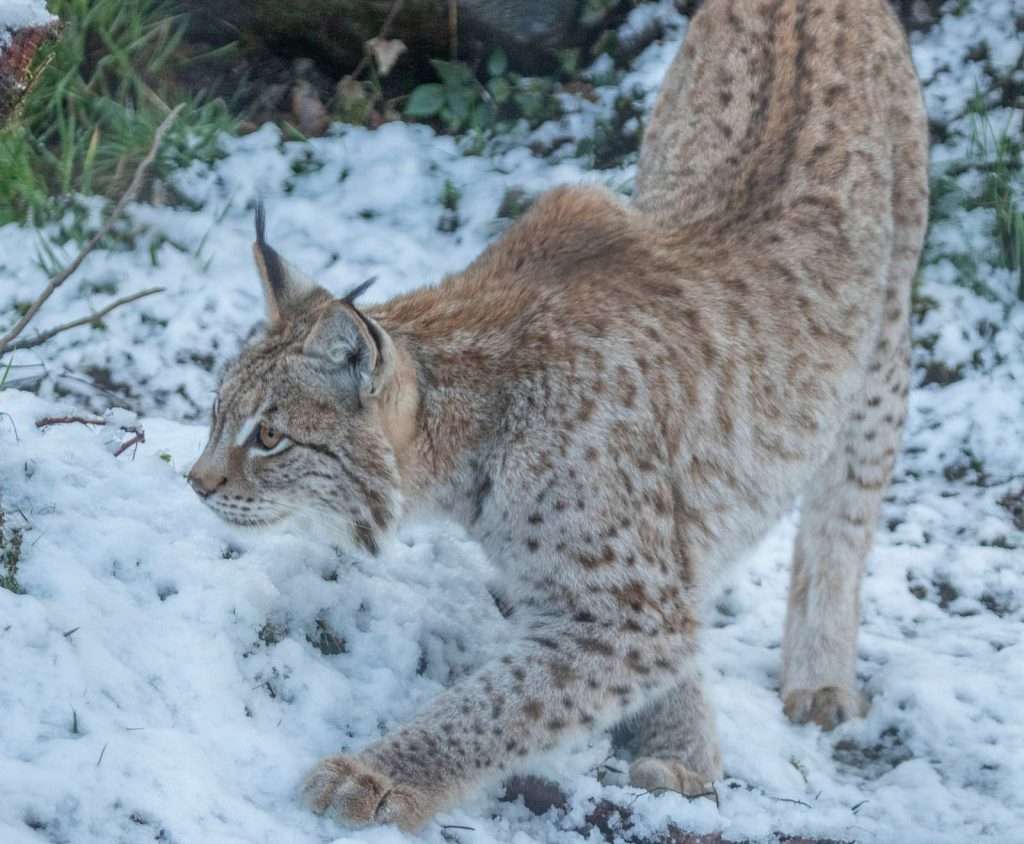
As a wildlife conservationist, I have been following the proposed national deer cull in Ireland with great interest. The debate surrounding this issue has been intense, with some arguing that the cull is necessary to control the deer population, while others believe that it is counterproductive and may even cause more harm than good. The proponents of the cull argue that the deer population is causing ecological damage and increasing the risk of road accidents. However, according to recent studies, culling is not an effective solution and may even exacerbate the problem.
One of the primary reasons why culling does not work is because of the social behaviour of deer. As with many animals, deer have a hierarchical social structure, and a dominant male, or stag, plays a vital role in suppressing other males’ breeding activity. When the dominant stag is removed, it can lead to a breeding free-for-all, resulting in an increase in the deer population. The figures from the Department of Agriculture appear to support this claim, with 4,749 deer killed in the first cull in 1995 and over 55,000 culled last year, 2022. These statistics suggest that the cull may be unintentionally increasing the deer population in Ireland, rather than controlling it.
Moreover, the impact of the cull on ecological damage and road accidents is debatable. While proponents argue that the cull is necessary to reduce the deer population, research has shown that reducing the deer population does not necessarily lead to a reduction in the number of road accidents involving deer. In fact, according to data from the Road Safety Authority, the number of road accidents involving deer has increased significantly in recent years, despite the culling efforts.
It’s concerning to see politicians, with no expertise in wildlife management, calling for a national deer cull. This has been a recurring issue with wildlife management globally, where people with no experience in the field, make decisions that have far-reaching consequences for us all. As an advocate of proper wildlife management, I have been frustrated by the politicians’ unwillingness to even listen to undisputable scientific evidence. This evidence has been mounting for centuries, but yet, they continue on the same path of destruction.
The recent call for a deer cull, echoes the call for wolves to be culled in the 1600’s. As a result, the Irish ecosystem fell out of balance after their extinction. It is only now we are seeing the consequences of their absence, with increased numbers of deer and indeed the proliferation of mesopredators such as foxes, which are over predating ground nesting birds and driving birds like the curlew into extinction.
Where will it end? Once the deer have been exterminated, what animal will be culled next? Bees, for instance, cause thousands of stings and hundreds of deaths each year. A very convincing argument could be made for their elimination. However, we all recognize the critical role bees play in pollination and the devastating consequences of their loss.
The truth is, nature is an inconvenience to the expectations of our modern lifestyles. We must recognise that we, as human beings, are a part of nature, not separate to it. Like a house of cards, the fragile balance of our ecosystem rests on the interdependence of its many components – bees, deer, wolves and humans play a vital role in the ephemeral dance of life, and the removal of even one can cause the entire house of cards to come crashing down

Nature is not something that can be confined or fenced off from our daily lives. It is an integral part of our existence, providing us with the air we breathe, the food we eat, and the water we drink. Without the presence of nature, a human life cannot be lived to its full potential. It is through our connection to the natural world that we find inspiration, solace, and a sense of purpose.
Politicians fail to take any of this into account nor indeed the vital role that deer play in the ecosystem or the dangers of verminising our native animals.
Deer are an important part of the food chain and provide a source of food for many predators such as Golden eagles. They also help to maintain a healthy balance in the ecosystem by controlling plant growth and promoting forest regeneration through seed dispersal. Deer play a role in our economy too, whether we find it distasteful or not, deer hunting and stalking bring economic benefits to rural communities as does the expanding wildlife tourism market. The sustainable harvesting of venison in itself, is not an issue to the ecosystem.
In areas where deer are overpopulated, they can cause damage to crops and gardens. They can over graze natural vegetation and cause desertification. This has been seen globally and many other countries have had to take action to restore balance. However, this is a symptom of the problem rather than the problem itself. The root cause of the issue is human intervention, which has disrupted the natural balance of the ecosystem.
Classifying deer as vermin would be a short-sighted solution to the problem. It would set a dangerous precedent for other native species, opening the door to the verminisation of our entire ecosystem. The term “vermin” implies that an animal is unwanted and harmful, leading to a culture of fear and hatred towards the species. This can have serious consequences for conservation efforts, as it makes it easier for people to justify their eradication.
Rather than treating deer as pests, we should focus on addressing the root causes of the problem. This involves implementing measures to reduce human impact on the ecosystem, such as reducing habitat destruction and promoting sustainable land use practices.
While it is true that deer collisions on roads are a significant issue, there are alternative ways to address this problem that do not involve culling. For example, installing wildlife crossings, reducing speed limits, and implementing public awareness campaigns could all help reduce the risk of collisions.
Some of the options proposed by governments include:-
Fencing: One of the most common solutions to keep deer out of certain areas is by installing fencing. While this may seem like a simple and effective solution, it can actually cause more harm than good. Fencing deer can cause starvation, as they may not have access to their natural food sources or be able to move to other areas to find food. This can lead to a vicious cycle of overgrazing in areas where they are allowed to graze, further damaging the ecosystem. Additionally, fencing can also have negative impacts on other wildlife that rely on the same areas.
Relocation: Another proposed solution is to relocate deer to other areas where their populations are lower. While this may seem like a humane and easy solution, it is not always effective. Deer are known to have a strong homing instinct, and they may return to their original habitats even if they are released miles away. Additionally, relocating deer to new areas can also spread diseases and parasites that can be harmful to both the relocated deer and the local populations. In any event, we are just moving the problem from one area to another.
Contraception: Another option that has been explored is contraception. This involves using various methods, such as injections or darts, to sterilize deer and reduce their breeding rates. While this method has shown some promise, it is extremely labour-intensive and costly. It also requires ongoing monitoring and follow-up to ensure its effectiveness.
While these alternative solutions may offer some temporary relief to the issue of deer overpopulation, they are not long-term or sustainable solutions.
Culling: Before implementing a national deer cull, we need to carefully consider the various factors at play. It is not just a matter of counting the number of deer and deciding to cull based on that figure alone. We need to work with ecologists and biologists to determine the sustainable carrying capacity of the Irish landscape for deer numbers. This includes ensuring the genetic diversity of our native deer population while also allowing for the responsible and sustainable harvest of venison. Additionally, any decision must take into account the biological impact, ecological impact, socio-political issues, legal issues, and public perception. It is essential to establish a set of guidelines and markers to assess these factors before determining whether a cull is necessary. By taking this approach, we can ensure that any decisions made are well-informed, thoughtful, and balanced.

In today’s society, name calling has become a quick way to silence healthy debate. I have been labelled a lunatic for my suggestion to restore a natural predator-prey balance in our ecosystem. Unlike some, I stand by my assertion that this is the only feasible long-term solution to a problem that is worsening every day. We need to consider the reintroduction of apex predators, such as wolves, to restore natural predator-prey relationships.
Some may argue that reintroducing wolves to an area will lead to attacks on humans. However, numerous studies have shown that wolves pose little threat to human safety. In fact, healthy, wild wolves have rarely been documented attacking or killing humans. The Norwegian Institute for Nature Research conducted a study spanning 20 years of wolf-human interactions and found that wolves generally avoid human contact and are not aggressive towards them. Similarly, a study in Minnesota found that wolves typically avoid people and only become aggressive when threatened or cornered. Most wolf attacks on humans sadly took place in areas where humans and wolves compete for food, like on dumps in the far east where orphan children forage for scraps of food in direct competition with wild wolves. Rabies also played a part in a lot of wolf attacks. Ireland is rabies free and it would be easy to quarantine imported wolves to preserve Irelands rabies free status. The conclusion of the studies was that your chances of being attacked by a wolf were above zero but too small to calculate. Cattle, like bees, kill a lot more people, should we ban cows too?
My suggestion to reintroduce wolves is backed by hard evidence that wolves maintain ecosystem balance, a balance that has been in existence for millennia. Yellowstone National Park serves as a prime example of the positive effects of wolf reintroduction. Yellowstone’s ecosystem in the 90’s was much like Ireland today. A lack of an apex predator saw a huge increase in deer numbers and the familiar overgrazing, increase in disease and deforestation. Since the reintroduction of wolves to the park in 1995, the ecosystem has been restored to a natural balance, with a decrease in overgrazing by herbivores and an increase in the health of the surrounding flora and fauna. We need to consider the reintroduction of wolves and other apex predators to restore a natural balance to our ecosystem and promote a healthier, more sustainable future. This is called trophic cascade, which is a term used to describe the ripple effect that a top predator can have on the entire ecosystem. An apex predator can regulate the population of its prey, which in turn can affect the populations of other species in the food web. When the population of an apex predator declines, it can lead to a boom in prey species, which can then have negative effects on lower trophic levels, such as vegetation and other herbivores. The presence of apex predators is crucial in maintaining the delicate balance of an ecosystem.
Multiple studies have shown that, human hunters cannot replace the role of a top predator. Wolves and lynx have a unique way of eliminating the weak animals. They chase them, the sick and weak ones lag behind and get caught, while the healthy ones get away. Hunters cannot replicate this natural process, which leads to the survival of the fittest and ensures the health of the ecosystem.

The reintroduction of top predators, such as wolves, can have a variety of positive effects on the ecosystem. For example, in areas where wolves are present, there are less deer-vehicle collisions. Economist Jennifer Raynor examined the economic impact that wolves had in Wisconsin. She found a 24% reduction in the amount of Road traffic collisions with deer in areas with a healthy wolf population.
Additionally, wolves have been shown to reduce the prevalence of disease. A 2019 Study by Tanner and others found that the presence of wolf showed a marked reduction in the prevalence of disease in wild boar populations. Wolves can also reduce the incidence of Lyme disease in humans by controlling deer populations, which are known to carry the disease.
In terms of restoring balance to the ecosystem, top predators play a crucial role in maintaining biodiversity and regulating populations of prey species and indeed mesopredators like foxes. Without predators, prey populations can grow unchecked, leading to overgrazing and the destruction of habitat. There are economic benefits too, through increased ecotourism activities. A reduction in disease benefits farmers with reduced veterinary costs and less livestock deaths.
One of the most interesting aspects of a top predator in the landscape is that they never overpopulate. Their population is intrinsically linked to the prey population. Increasing when needed and decreasing when balance is restored. Apex predator culls are never necessary.
Despite the benefits that top predators bring to the ecosystem, many farmers argue that reintroducing wolves would harm their livelihoods. However, there are different types of farmers with different interests. While wolves can cause problems for sheep farmers, deer can decimate a crop farmers’ entire living for the year.
A landscape of fear is created when the wolf returns and deer are afraid to stay in one area and over graze. They nibble a little and move on, just in case they are being stalked. Overgrazing is dramatically reduced.
Domestic livestock can be impacted by apex predators. but, a recent paper published in America found that domestic dogs kill 100% more cattle than wolves do and 2000% more sheep than wolves. They also examined the faeces of wolves and found that domestic animals made up less that 1% of their prey. Wolves and dogs, although related are very different animals. Wolves in the landscape may even encourage pet owners to keep their dogs from roaming the countryside, further benefitting farmers.
In mainland Europe, farmers have been able to profitably coexist with wolves by choosing traditional breeds of livestock that have instincts to protect themselves from wolves. For instance, traditional breeds of cattle have horns and instincts to circle the young and fight off wolves. In addition, fences only 1.2m high have been shown to deter wolves, as they lack the instinct to jump over the fence and instead run along it. A strand of electric wire can further bolster protection and stop digging under the fence.
Shepherd dogs are one of the cheapest and most effective ways to protect sheep from wolves. This method is widely used in Europe and the Middle East to protect sheep from predators. By reverting to the Irish tradition of bringing sheep in at night, the sheep would be better looked after, the highest cause of sheep death globally is neglect, not wolves or dogs.
Releasing wolves to kill deer maybe considered inhumane. It is understandable to question whether wolves killing deer is cruel, but in reality, it can be more humane than allowing the deer to suffer from old age, disease, starvation and injury. In nature, animals do not have access to veterinary care, and often suffer prolonged and painful suffering before death. Wolves are part of the natural balance and quickly put suffering animals out of their misery. Conversely, wolves can actually benefit the deer population by preying on the weak and sick, leaving the healthy and strong to reproduce and pass on their genes. This natural selection process ensures that the fittest individuals survive and continue to improve the health of the population over time. Therefore, reintroducing wolves can be seen as a way to promote the long-term health and welfare of the deer population, rather than being a cruel and inhumane act.
Some argue that the habitat in Ireland is no longer suitable for wolves to return. While it is true that the natural landscape has undergone significant changes in recent years, we must consider that we still have the habitat to support a significant population of deer. Wolves and deer share the same wild places. A study by Colin Guildfoyle found that we do not yet have the habitat for lynx in Ireland. I would argue that wolves are much more adaptable than lynx. They are found in Belgium, Holland, and other European countries with less wilderness and a denser human population, than Ireland. As seen in Yellowstone, wolf presence quickly and dramatically increases forest habitat.
It is also important to note that wolves have a long history of coexisting with humans on this island. Our ancestors were able to live alongside wolves even when the population was almost double what it is today, pre-famine. The ancient Irish respected and revered the wolf.
The International Union for Conservation of Nature (IUCN) has developed guidelines for reintroductions, and one of the fundamental consideration for a reintroduction project is that the factors that caused a species’ decline and extinction must be no longer present or have been addressed. Fear and misunderstanding around wolves still exists in Ireland, as evidenced by politicians calls for wildlife culls. Ultimately, the success of any conservation effort will depend on our ability to inspire future generations to care for our planet. Through education and awareness, we can cultivate a sense of responsibility and stewardship in young people, empowering them to become the conservationists of the future.
It’s unfortunate that fear and misinformation continue to dominate discussions around restoring natural predator-prey relationships in Ireland. We need to look at the evidence and rely on the expertise of ecologists and biologists to make informed decisions about the future of our ecosystems. The truth is, a balanced ecosystem with healthy predator-prey relationships is essential for the long-term sustainability of our environment. Not only does it benefit our wildlife and biodiversity, but it also has significant economic and social benefits. We cannot allow uneducated politicians to make decisions based solely on their own interests and disregard the impact it will have on our planet. We must speak up and demand that our natural resources be protected, not just for our own sake, but for the sake of our children and their children. We must remember that we are merely borrowing this planet from them, and it is our duty to leave it in a better condition than we found it. It’s time to put aside unfounded fears and work towards restoring the natural balance of our ecosystems for the benefit of all.
Killian McLaughlin
Make a donations that will directly impact our park an help us on our mission to protect, preserve, and educate everything local wildlife.
Make a donation
Choose the animal you would like to support and know that every cent of your contribution makes a difference.
Browse adoption packs
We are always looking for skilled and passionate people to volunteer with our park and our animals.
Send your CV
We always have fantastic career opportunities. Check this link now to see what’s available.
Check current openings
Explore fantastic opportunities to showcase your brand as a company who cares about wildlife and the sustainable economy.
Get in touch
Get the latest animal stories, news, insights, and more.
Wild Ireland
Dundrain
Burnfoot
County Donegal
F93 KN7X